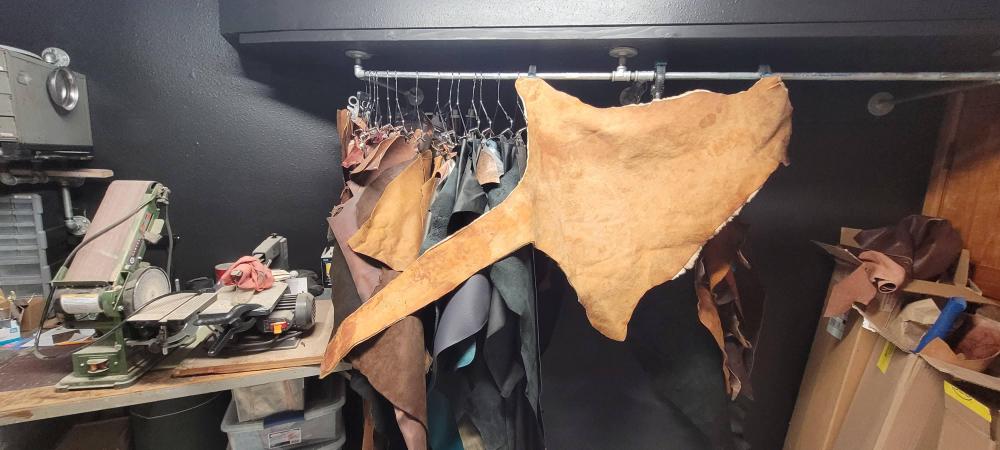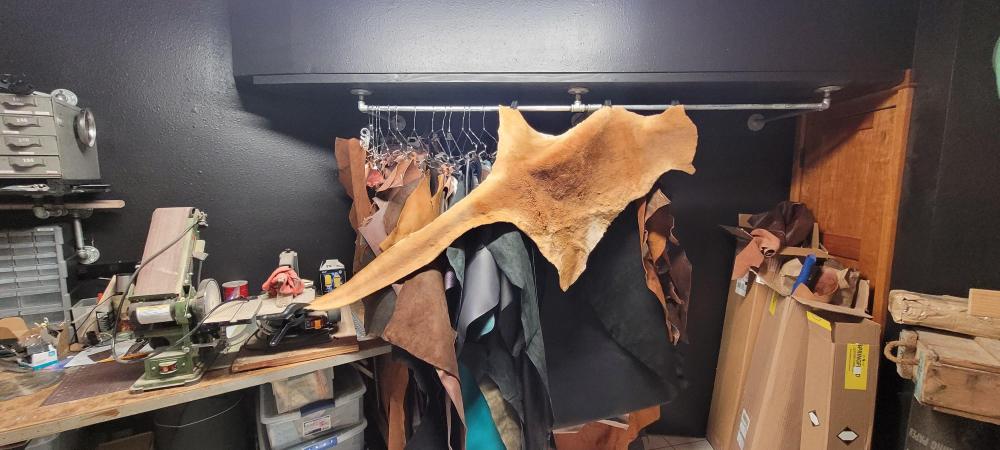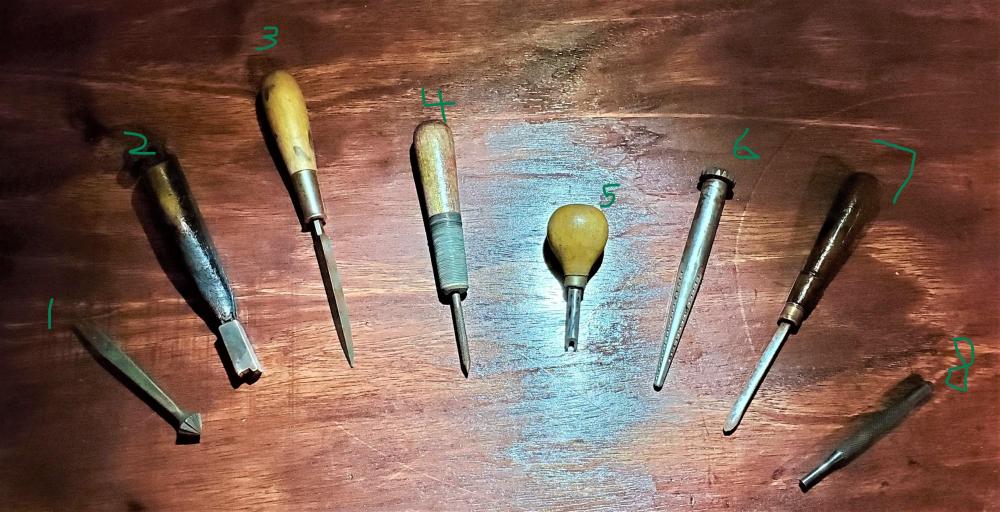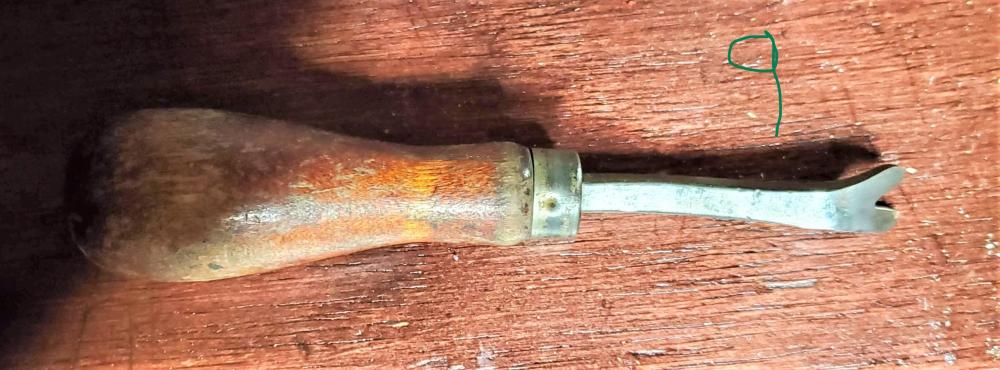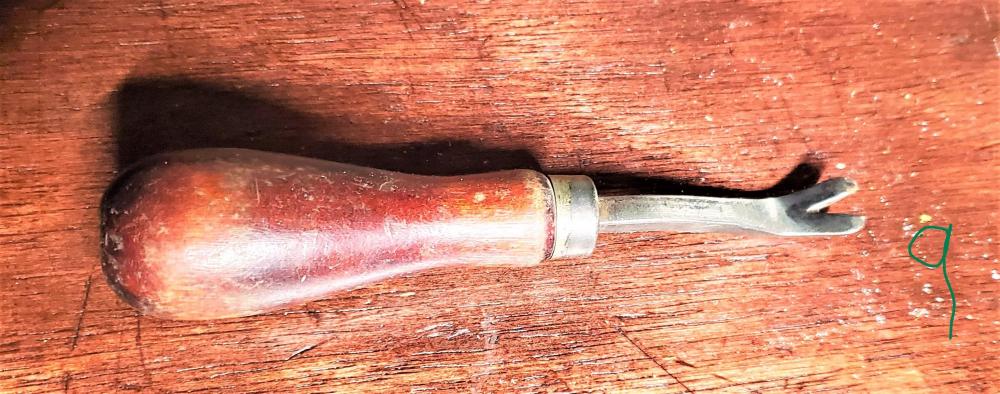-
Posts
103 -
Joined
-
Last visited
Content Type
Profiles
Forums
Events
Blogs
Gallery
Everything posted by MedusaOblongata
-

Finish coat American aligator
MedusaOblongata replied to Scootch's topic in Exotics, Reptiles, Furs and others
I like Tan Kote on gator. It seems to give better results than Resolene or anything else I've tried. If you have scraps of it, test a little each finish you have on different pieces or spots and see which result you like best. -

How Do I Get the Smell Out of This Wallaby?
MedusaOblongata replied to MedusaOblongata's topic in How Do I Do That?
Pics attached here. The backside is a bit mottled, like something may have been spilled on it or glue removed. Decent shape otherwise, though. The only marking on it says "=58" The fur is very soft. I got it from an online auction, the seller didn't know anything about it, other than they said it was wallaby. They could have been wrong, but I don't know what else it could be. (Off topic, but in case anyone's wondering, what you can see behind it is my leather hanging system. It's 1/2" plumbing pipe screwed into ceiling joists with metal clothes hangers hanging on it, and leather hanging from those using 1" rug clips, which do dent the outer leather, but don't put holes in it like shower curtain rings would. It makes it easy to browse for leather as you would for clothes in a closet, with leather neither rolled up nor lost behind or under other pieces of leather.) -

How Do I Get the Smell Out of This Wallaby?
MedusaOblongata replied to MedusaOblongata's topic in How Do I Do That?
It appears to have been tanned as well as any other leather, completely. -
I just received a wallaby hide, hair-on, in the mail and in a few hours the whole room smells like unwashed dog (no dog has a tail that big, so it's definitely not a dog skin). Usually I look forward to leather in the mail because it smells so good! I can't make anything out of this, not smelling like this. Can I shampoo and condition it, or will the water stay in the fur and leather or something? Thanks, guys
-

Can You Help Identify These Tools?
MedusaOblongata replied to MedusaOblongata's topic in Leather Tools
Thank you so much. You guys are smart and helpful. I appreciate it. -
I bought a lot of old, used leatherworking tools. Most I identified, cleaned up, and put to work. These few left me with some questions. #1 has this pattern, not sure what it would do. #2 might be a creaser(?) but it would leave a line pretty far from the edge if so. #3 has three curved sides heading towards the point. The edges aren't sharp, but they seem sharpenable, though I wouldn't see why. #4 has a point like a scratch awl, but the barrel is textured like a file, and the wire wrapping on the handle seems a bit like overkill since awls are simpleish. Maybe just homemade? #5 Is has a 1/8" hole from the end of the handle all the way through, though I don't know why #6 is flat on the back/top end, though it's textured around the sides of the top. The lower half is rough enough that side is uncomfortable to hold. I have rasp dremel bits similar in structure. #7 is well worn, but could has a curved and sharpened end #8 is round on both ends, knurled in the middle. It could be a pin punch for very large pins. #9 could be a very wide edge beveler, though it's so dull it would take an hour on a grinder to get any kind of edge on it. Thank you for taking the time to look over these for me.
-
I thought poundo boards were designed for punches and the soft material wouldn't dull them. According to SLC's video here: poundo boards dull punches and you're better off with hard plastic cutting boards. This is counterintuitive to me, but these guys know way more than I ever will. Then they say that poundo boards make good cutting boards, though in my experience soft cutting boards create more drag than hard ones, and even my grid ruled self healing mat causes more drag on the point of a knife than a hard plastic cutting board. I've also heard chefs say they use plastic cutting boards because they can be sterilized better, though they dull knives worse than wood ones do, which also seems opposite to what they're saying here. I'm not trying to be argumentative, I'm just pretty confused. Can anybody make sense of all this for me?
-
Does anybody make an infinitely adjustable belt buckle sturdy enough for a gun belt? I have a lightweight infinitely adjustable belt that just uses friction to hold its position and it's very comfortable, but I can expand it just by tightening my stomach muscles - it's nowhere strong enough to hold up a pistol. Do you know of any infinitely adjustable belt buckle that is sturdy enough?
-

Applying finish to rattlesnake skin sheath
MedusaOblongata replied to jake210c's topic in How Do I Do That?
I've had good luck with Resolene on snake skin. Brush it on in the same direction as the scales, thin coats, and buff only in the same direction. -

What can SLC do for you?
MedusaOblongata replied to TonySFLDLTHR's topic in Leatherwork Conversation
I really appreciate that you're here on LW.net. That means a lot. Add T-slots to your precut shapes (in natural veg and black goat, pig, or chrome). Coordinate with people and companies that do custom work and offer their products and services as yours, like patterns, custom acrylic templates, and custom stamps. I like the random exotics you offer and would definitely like to see more. I appreciate that you still have a paper catalog. I would like to see lower shipping charges, or at least make shipping charges appear lower by building it into the price of leather. Run specials for members of this forum, even if they're not huge, it makes us feel special. I really like the upgraded website. -

Good Bag making book/patterns
MedusaOblongata replied to Aresioh's topic in Satchels, Luggage and Briefcases
Practice on cheap leather. Dig through the scrap bin of a local leather store. Buy a piece or bundle of leather online. Tell yourself you'll use it to hold screwdrivers and hammers and you'll store it on the floor of the garage with the oil stains. Then you'll have permission to make mistakes, make it imperfect, ruin it and throw it out. Do that a few times and when you start making things so good you wish you'd used the good leather on them, then you know you're ready to use the good leather. You can also just buy more good leather, then when you go to cut it you'll know it's not the only piece you have. -

designing leather jacket, comfortable sleeves
MedusaOblongata replied to aru's topic in Leatherwork Conversation
A great way to do this kind of thing is to buy a jacket at goodwill for $10 and take it apart to see how it goes together. That doesn't mean you need to trace the pieces to copy it, but what you want to learn is how jackets are constructed and this would be a good way to do it. You might also find more good info in some of the fabric sewing forums. More people make their own fabric clothing than leather. You can see, from how rarely it's discussed here, how unfortunately uncommon it is for people to make their own leather jackets. I would love to learn to make my own leather jackets too one day. I'm going to start with vests, then figure out sleeves. -

Any math geeks out and about? RED PILL ME
MedusaOblongata replied to Frodo's topic in Leatherwork Conversation
I think Retswerb has a point. If you use a stitching chisel with 7 (or whatever) points, the two on the far ends should prevent the leather from stretching in between them. This would be easy enough to test, though. Take your strip of leather, measure it precisely, punch holes, then measure it again. On the other hand, if each tine has a sharp point but not sharp edges, then it could be stretching or pushing the leather apart by the length of each hole, kind of like what you'd get if you drove a nail into the leather. One thing I've done to try to stop leather from changing shape and size on me while I'm working with it is I stretch the leather as far as I can with my hands in each direction before I cut it, thinking that might prevent it from stretching afterwards. I'm only partially successful with this, though, because sometimes the leather will stretch, shrink, or both, and two pieces I cut to the same size by laying one on top of the other for the cut will end up different sizes and shapes, making my work take much longer than it would if I knew what I was doing. -
The double sided basting tape that you can get from Tandy and Springfield is incredibly thin, probably thinner than contact cement. It is not strong in the long term, so it doesn't add strength to products the way good glue does. If you're restitching an item, why would you need to separate the pieces? You could pull what's left of the old stitching and restitch without disassembling the item, which would save a lot of time, and save you from the nightmare of stitch holes no longer matching up once you (for some reason) disassembled and reassembled. Strong glue can hold the piece together even after the stitching wears away, which will mean less returns. I have yet to be convinced that weaker glue will be a superior option.
-

This Art Form Is Going Straight To Hell
MedusaOblongata replied to Reegesc's topic in Leatherwork Conversation
This thread starts by talking about the state of the leatherworking craft industry, which we probably all know is not robust enough to necessarily remain secure in the long run. From there it could have gone on to what we all can do to keep the industry alive at least well enough that our suppliers don't all go out of business because there aren't enough of us to sustain them. Instead it went on to ranting about how stupid people are, which, though true, isn't bringing us closer to a solution. Then storytime about old time leathercraft, which also doesn't bring us to a solution. What is necessary is to get more people taking up leatherwork. This will expand the market for the supplies that we need to buy, and more interest in the craft across the board will help educate bits of the public enough that they'll understand why we can't sell them belts and wallets for $25 and briefcases for $50. As we've seen, those of us who've tried to spread the word and teach classes haven't had huge success. Complaining that kids just want to play with cell phones and watch TV doesn't help. Teaching kids (and adults) to want other things would be more effective. Yes, Tandy could be leading the way, more effectively. Honestly I'm sure that's exactly what they'd love to do because they'd benefit more than anybody else, since they're so many people's first leather dealer, and many stick with them for a very long time. Clearly they have not been effective enough at making leatherwork more popular. Has anybody thought of giving them ideas? Whatever makes them successful will ultimately make us all successful. Can anybody start one of those popular and stupid TV shows with leatherworkers where they vote one off every week? I haven't owned a TV in decades, but I hear those shows are popular. I'm just a hobbyist here, not a professional or an expert. I hardly post because I have so much more to learn than I do do teach. It seems clear that we're hanging on to a shrinking industry (tanneries closing, storefronts closing), and that's not a good sign. People on this forum know the industry, though, and collectively we might be able to put some plans into motion that would actually make a difference. -
I just moved to a new house, setting up the new workshop, and working on a leather storage system that will hang leather from a bar. I'm looking for clips strong enough to hang hides without actually having to puncture them. What are the clips they use to hang or stretch hides at the tannery? What other clips would work? I've been through every hardware, art supply, home goods, and office supply store in my city and haven't found any good solutions. I could use clips that will hang from a bar, or those I could attach to a hanger of some sort. Thank you in advance,
-

Cowboy 3200 making noise
MedusaOblongata replied to MedusaOblongata's topic in Leather Sewing Machines
I emailed a link to the video to Toledo, and Bob said it's a bearing and he sent out a new speed reducer, which I've installed and it's working quietly now. I'll be mailing the old one back to him and hopefully he'll let me know if this is due to some kind of user error. -

Cowboy 3200 making noise
MedusaOblongata replied to MedusaOblongata's topic in Leather Sewing Machines
There is some slack in the chain. -

Cowboy 3200 making noise
MedusaOblongata replied to MedusaOblongata's topic in Leather Sewing Machines
Thank you all so much for the replies. I disconnected the belts and spun each component separately and it's the speed reducer that's making the noise, definitely not the motor or the head. Oddly, it just started happening, nothing else had changed. I'm not sure what would make that happen, how to quiet it, or whether it's a sign of something bad or just a noise? Is there a spot on the speed reducer that needs to be oiled? As far as why I posted here first, it wasn't to badmouth Bob or Toledo or Cowboy. I've learned most of what I know about leatherworking from the knowledgeable and helpful folks here on this forum. And long before leatherwork, I discovered forums as one of the absolute best places on the internet to find friends, camaraderie, information, answers, and ideas. Every time I have a question, the first thing I do is search the relevant forum. It was from this forum that the Cowboy was recommended, on this forum that Toledo was recommended, on this forum that I learned about leather sewing machines and what they can do. This is where my experts are. I apologize if my post came across in a negative way. I am grateful for each of you who've taken the time out of your day to respond to my problem. Thank you. -
After 3 months and about 15 hours of use, my previously flawless Cowboy 3200 (from Toledo) just started making this creaking, croaking, groaning noise. It sounds like it's coming from the motor, not the head, and sounds the same whether there is leather or thread in it. It has been oiled, both regularly and recently. Despite the new noise it just started making, it still sews just fine, but it does concern me. Any ideas?
-
Thank you for the comparison. That is very helpful.
-
For years I had just been using a rubber mallet I inherited with my father's tools, and that mostly worked well enough. Then in a Cliff's Variety store I saw some mauls for sale. All I knew about mauls was that a lot of y'all leatherworkers recommended them, though I had never tried one. I checked the prices, then compared them to Barry King since it was the only maulmaker I had heard of, and went back inside and bought a Wood Is Good maul for $40. I've been using it for well over a year, and when I need another weight maul I'll get another Wood Is Good (wood handle, poly head). It's not as pretty looking as that leather one, but it works very well, and doesn't look beat up at all. Also, I'm surprised nobody posted the hammer video yet:
-
Great looking bag there! I definitely agree that a matching strap would look great and a fabric strap looks cheap and out of place.
- 24 replies
-
- messenger bag
- bag
-
(and 2 more)
Tagged with:
-

Cheapest Machine to Sew 1/2"?
MedusaOblongata replied to MedusaOblongata's topic in Leather Sewing Machines
Thank you for your replies. I ordered the 3200 from Bob at Toledo today. Now it's just the waiting game.- 6 replies
-
- another which machine? thread
- doitall
-
(and 1 more)
Tagged with:



